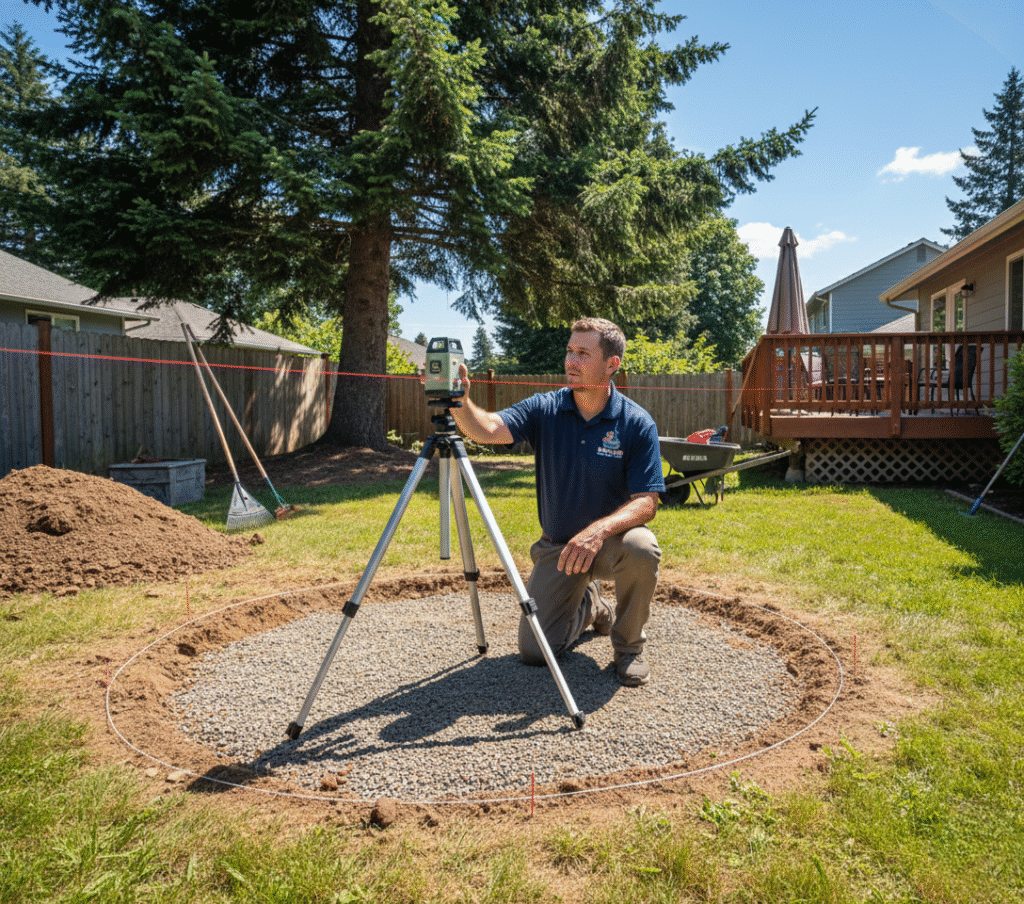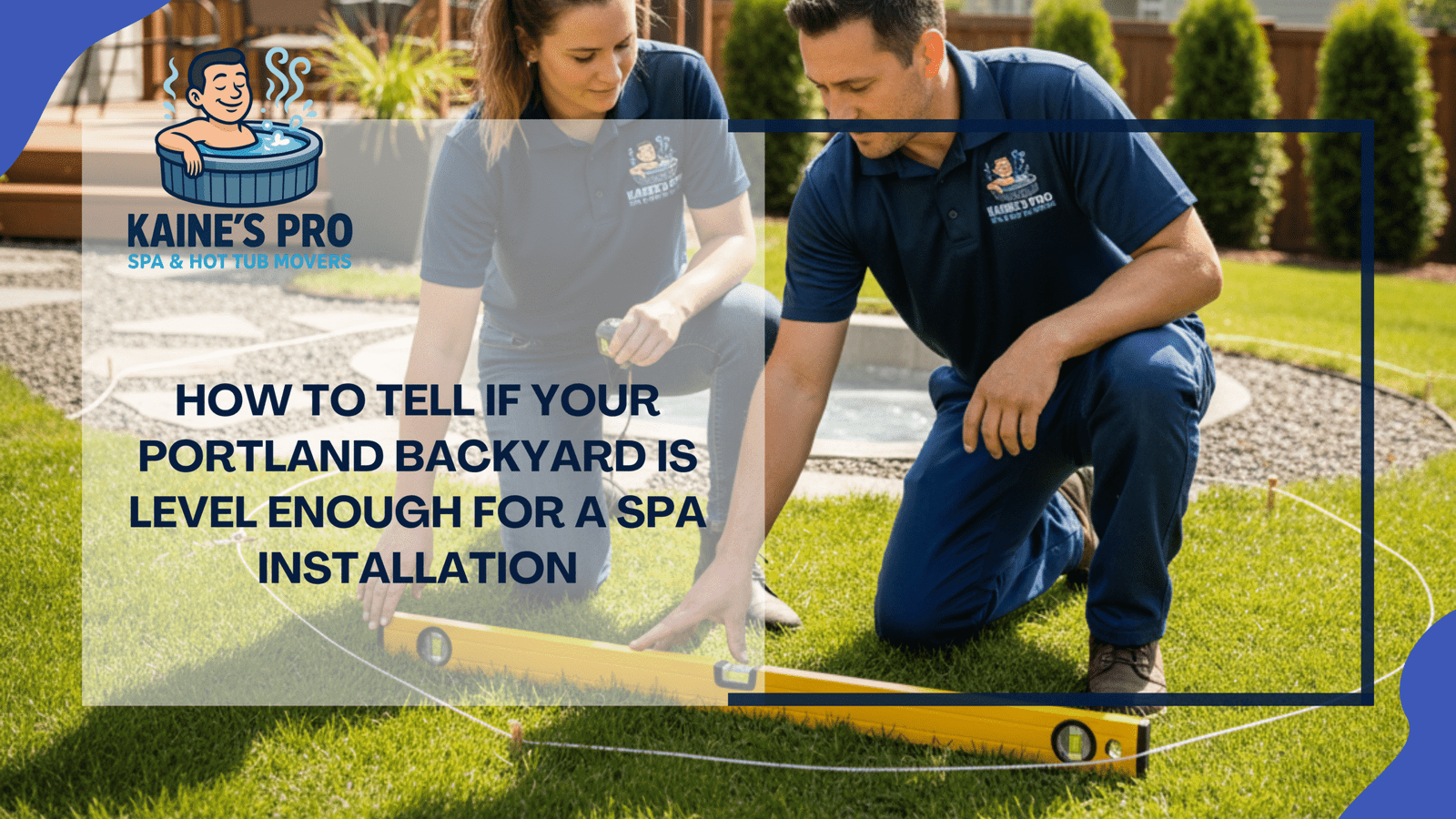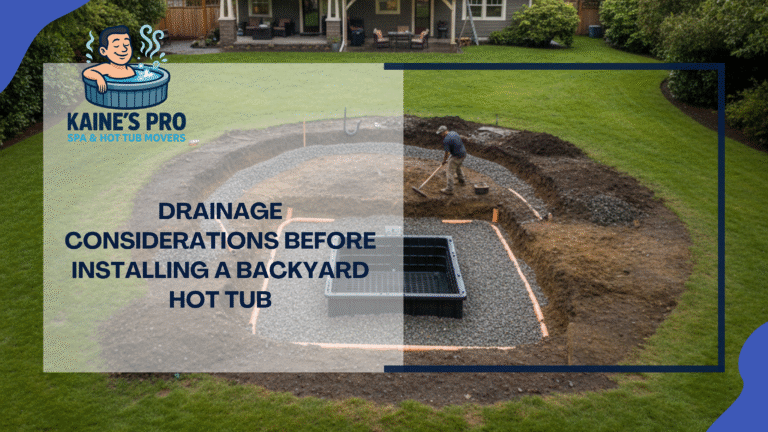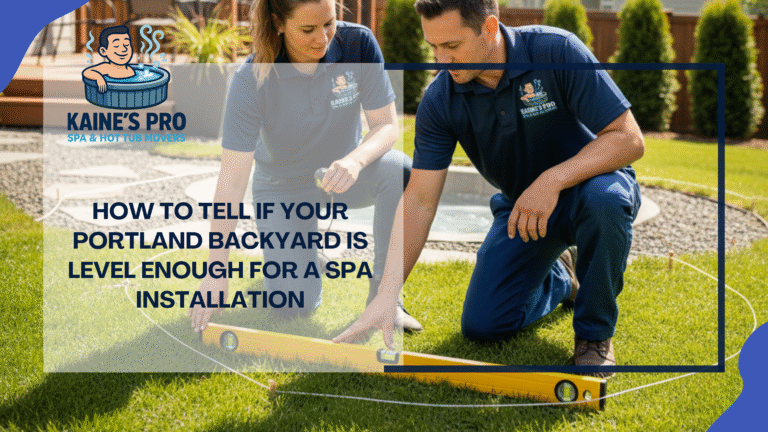Installing a spa in your backyard is an exciting upgrade that can turn any outdoor space into a relaxing retreat. But before installation begins, there’s one crucial factor that determines the safety, stability, and longevity of your investment: the levelness of your backyard. Uneven ground may seem like a minor issue, but it can lead to structural stress, uneven water distribution, and even spa damage over time.
While DIY enthusiasts might be tempted to “eyeball” their backyard level, spa installation requires precision and professional equipment. If you’re a homeowner in Portland, understanding how to evaluate and properly prepare your space is essential to avoiding costly repairs later.
Why a Level Foundation Matters for Your Spa
A spa filled with water can weigh thousands of pounds. If it’s sitting on an uneven surface, that weight isn’t distributed evenly, and that’s where problems begin. Common issues with poorly leveled spa installations include:
- Cracks in the shell or frame are caused by stress points.
- Uneven water levels make the spa uncomfortable to use.
- Pump and plumbing strain, leading to premature equipment failure.
- Shifting and settling, especially during Portland’s rainy season.
A solid, level foundation supports the spa evenly on all sides, ensuring it lasts for years. Professional installation teams use laser levels and precision grading to create the ideal base, something that a DIY approach often fails to achieve.
How Professionals Assess Backyard Leveling

Assessing your yard’s slope isn’t just about placing a carpenter’s level on the grass. Here’s what professional installers look for:
- Slope Measurement: Experts use laser leveling equipment to measure even slight dips or inclines.
- Drainage Patterns: Understanding how water flows in your yard helps avoid future flooding under the spa.
- Soil Stability: Portland’s wet climate can cause shifting soil, so installers check for stability.
- Load-Bearing Capacity: Some yards require reinforced pads or deck support to handle the spa’s weight.
This thorough assessment ensures your spa sits on a foundation that’s built to last, not just “close enough.”
Common Signs Your Backyard Isn’t Level Enough
Even without specialized tools, there are clear signs your backyard may need leveling before a spa installation:
- Puddles are forming in certain areas after rain.
- Patio furniture or pavers appear tilted.
- Sloping that’s visible, especially near fences or retaining walls.
- Water is pooling against the foundation of your home.
These indicators mean your yard likely needs grading or base preparation before any heavy structure, like a spa is placed. Rushing this step can lead to expensive foundation fixes later.
The Professional Leveling and Installation Process
Leveling a backyard for a spa involves more than just shoveling dirt. Here’s how professional installers typically prepare the site:
- Site Evaluation and Marking – Determining the exact spot for the spa and mapping out its footprint.
- Excavation and Grading – Removing uneven patches, debris, or grass to create a smooth surface.
- Foundation Installation – Laying a concrete pad, reinforced decking, or gravel base to handle weight.
- Drainage Setup – Ensuring proper runoff to prevent flooding under the spa.
- Leveling and Precision Check – Using laser levels to make sure the foundation is perfectly flat.
This process ensures your spa doesn’t shift, tilt, or settle unevenly over time.
Why DIY Leveling Can Be Risky
While some homeowners consider leveling their own yards to save money, the risks usually outweigh the savings. Without the right equipment, you might not catch subtle slopes that can lead to:
- Cracked or damaged spa shells.
- Inefficient drainage causes flooding and mold.
- Extra costs for repairs or reinstallation.
- Shortened spa lifespan.
Professional installers in Portland are trained to identify issues that aren’t visible to the untrained eye. A DIY job might seem fine at first, but small errors often turn into major headaches after installation.
Long-Term Maintenance Tips for a Level Spa Foundation

Even with a perfect installation, your spa’s foundation needs occasional maintenance to remain stable:
- Check for Shifting: Portland’s changing seasons can cause soil movement over time.
- Maintain Good Drainage: Clean out drainage systems to prevent water buildup.
- Inspect Decking or Pads: Look for cracks or settling around the spa base.
- Schedule Professional Inspections: Annual checks can catch issues early.
Taking these steps helps extend the life of both your spa and its foundation.
Call to Action
Sometimes it is very important to leave the job to a professional, as it won’t just save you a lot of your precious time, but it will also save you from any expensive mistakes. Contact us today!



